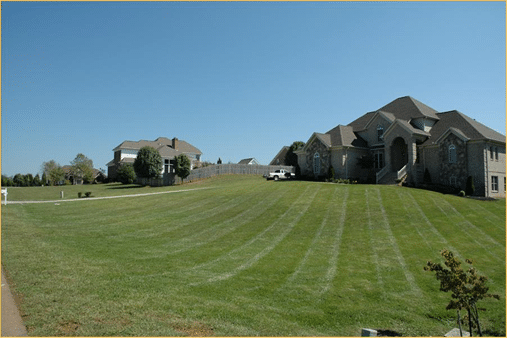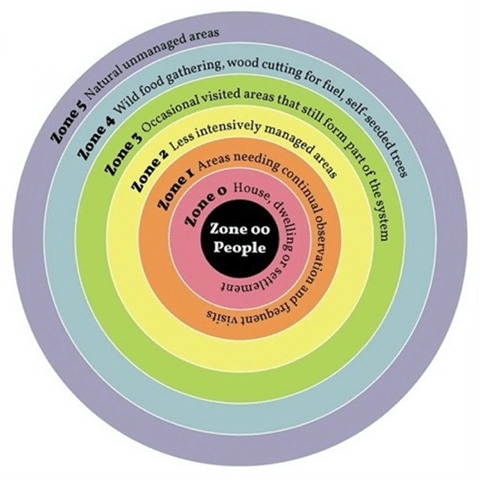SCALE BACK YOUR GRIP ON THE LANDSCAPE

The very simple definition of Permaculture is “permanent agriculture”. While this most often refers to fairly elaborate sustainable methods of self-sufficiency, my post today will be more about being able to share your property with nature and thereby perhaps scaling back the energy you’re putting in to maintaining your property / garden.
Here in Knoxville, TN we are blessed to have so many native plants with which to work. Nothing says you’re in East Tennessee more than some layering of broomsedge (Andropogon virginicus), winged sumac (Rhus copallina), and eastern red cedar (Juniperus virginiana). While some may not have the luxury of having enough yard to accommodate large swaths of native vegetation, I can attest to the fact that there are those very large properties that can get away with easing off the mower a bit and allowing nature to play a role.
As a landscape architect I have advised countless clients about the benefits of allowing semi-wild buffers between properties to occur. The most tangible and beneficial of these being the creation of habitat and the possible reconnection of some of the fragment habitats that place wildlife in peril as we develop and pave over so many vital wildlife corridors.
As a university professor, I’ve done a fair amount of research into the benefits of permaculture as I try to relate these concepts to my students. One concept that appears over and over again is that of “zoning” one’s property. Don’t get excited as this has absolutely nothing to do with politics (thanks goodness) or governance. I’m speaking only of prioritizing how you may manage a larger piece of real estate. Consider your house as the bull’s eye of a dart board. Now imagine the circle immediately surrounding this. That is the zone where you want to put in the maximum effort of garden / landscape management. This would include your entry, plantings nearest the home, entertaining spaces, etc. It only makes sense that these areas receive the most attention.
As you radiate to the next encompassing circle, you’re likely considering lawn areas, some tree plantings and possibly a vegetable garden and compost bin. While you aren’t likely to relinquish this zone to total ecological succession, you should feel the need to constantly re-mulching and yanking out every tiny weed.
Now comes the fun part. The furthest zone from the home may indeed be an area where you do very little but perhaps try to keep any invasive exotic plants from getting a foothold. If you were to allow hedgerows to be part of the picture AND, if your neighbors practice a similar low-key approach, eventually one little wild buffer becomes but one piece of the wildlife corridor (zone in which birds and critters may move safely about) puzzle. Before you know it your entire community has an official “Certified Wildlife Habitat” designation. https://www.nwf.org/Garden-for-Wildlife/Certify
So, get off that mower and let nature surround you.








